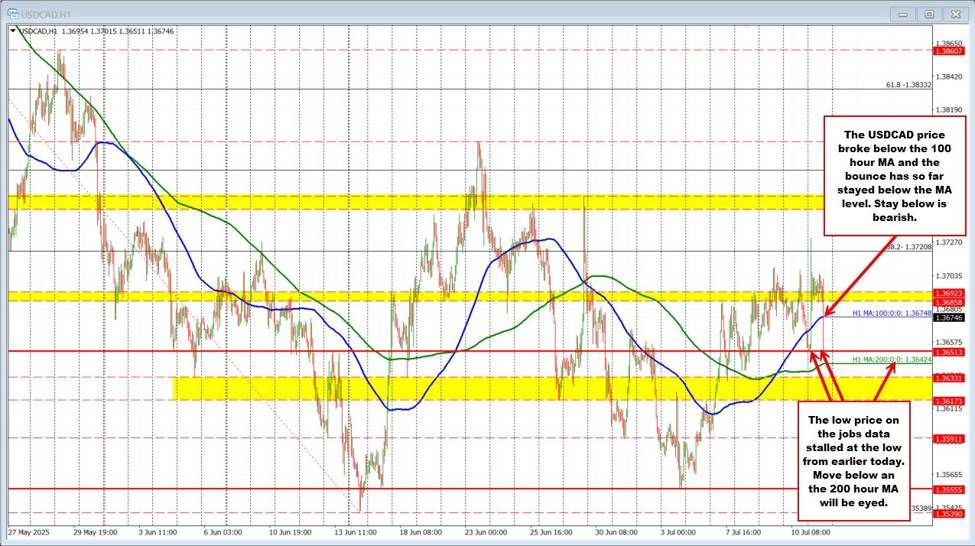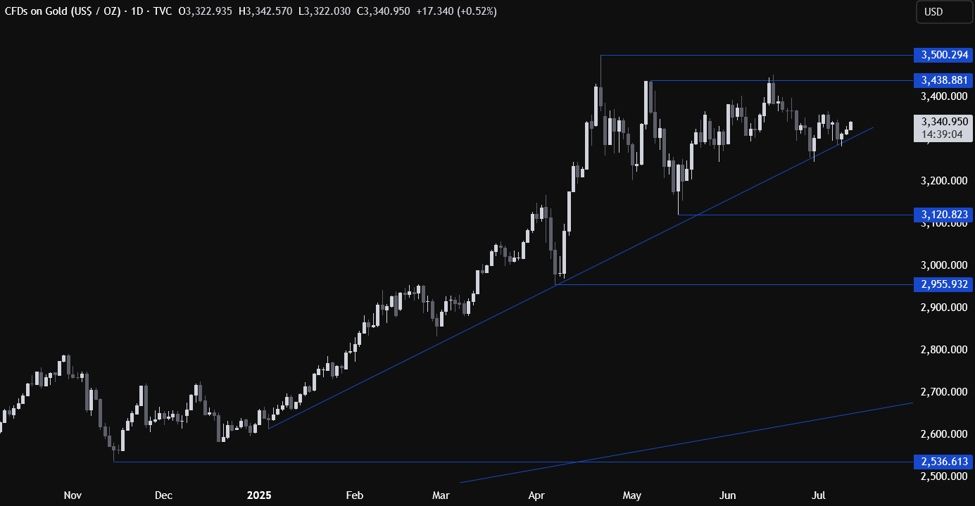UNLOCK EXCLUSIVE CONTENT
In this informer hub you will get only that which can help you grow financially and increase your knowledge. Subscribe by entering your email address. After that you will get the link to our WhatsApp channel, join it.
 |
| Free VPS server |
- EUR/USD fluctuates slightly above 1.1600 in the European session on Wednesday.
- Markets assess the Fed’s rate outlook following June inflation data.
- Technical sellers could take action in case 1.1600-1.1590 support fails.
After losing more than 0.5% and touching its lowest level in three weeks near 1.1590 on Tuesday, EUR/USD edges higher and trades above 1.1600 in the European morning on Wednesday. The pair’s near-term technical outlook suggests that the bearish bias remains intact following a correction from oversold levels.
The US Dollar (USD) gathered strength following the June inflation data and caused EUR/USD to turn south.
The Bureau of Labor Statistics reported on Tuesday that the Consumer Price Index (CPI) rose by 2.7% on a yearly basis in June. This reading followed the 2.4% increase recorded in May and came in line with the market expectation. Following this data, the probability of the Federal Reserve (Fed) lowering the policy rate by 25 basis points in September declined toward 50% from nearly 70% in the previous week, as per CME FedWatch Tool. In turn, the USD Index, which tracks the USD’s performance against a basket of six major currencies, gained about 0.6% on the day.
Later in the day, the US economic calendar will feature Producer price Index (PPI) data for June. A significant increase in the monthly figure could boost the USD with the immediate reaction and cause EUR/USD to continue to stretch lower.
Investors will also pay close attention to comments from Fed policymakers. If officials downplay the June inflation data, the USD could have a difficult time outperforming its rivals.
EUR/USD Technical Analysis
The Relative Strength Index (RSI) indicator on the 4-hour chart stays below 40 after rebounding from below-30, suggesting that the latest recovery is a technical correction rather than the beginning of a reversal.
On the downside, 1.1600-1.1590 (static level, round level, 200-period Simple Moving Average) aligns as a strong support area before 1.1540 (Fibonacci 38.2% retracement level of the latest uptrend) and 1.1500 (static level, round level). Looking north, resistance levels could be spotted at 1.1660 (Fibonacci 23.6% retracement) and 1.1715 (100-period Simple Moving Average).
Euro FAQs
The Euro is the currency for the 19 European Union countries that belong to the Eurozone. It is the second most heavily traded currency in the world behind the US Dollar. In 2022, it accounted for 31% of all foreign exchange transactions, with an average daily turnover of over $2.2 trillion a day.
EUR/USD is the most heavily traded currency pair in the world, accounting for an estimated 30% off all transactions, followed by EUR/JPY (4%), EUR/GBP (3%) and EUR/AUD (2%).
The European Central Bank (ECB) in Frankfurt, Germany, is the reserve bank for the Eurozone. The ECB sets interest rates and manages monetary policy.
The ECB’s primary mandate is to maintain price stability, which means either controlling inflation or stimulating growth. Its primary tool is the raising or lowering of interest rates. Relatively high interest rates – or the expectation of higher rates – will usually benefit the Euro and vice versa.
The ECB Governing Council makes monetary policy decisions at meetings held eight times a year. Decisions are made by heads of the Eurozone national banks and six permanent members, including the President of the ECB, Christine Lagarde.
Eurozone inflation data, measured by the Harmonized Index of Consumer Prices (HICP), is an important econometric for the Euro. If inflation rises more than expected, especially if above the ECB’s 2% target, it obliges the ECB to raise interest rates to bring it back under control.
Relatively high interest rates compared to its counterparts will usually benefit the Euro, as it makes the region more attractive as a place for global investors to park their money.
Data releases gauge the health of the economy and can impact on the Euro. Indicators such as GDP, Manufacturing and Services PMIs, employment, and consumer sentiment surveys can all influence the direction of the single currency.
A strong economy is good for the Euro. Not only does it attract more foreign investment but it may encourage the ECB to put up interest rates, which will directly strengthen the Euro. Otherwise, if economic data is weak, the Euro is likely to fall.
Economic data for the four largest economies in the euro area (Germany, France, Italy and Spain) are especially significant, as they account for 75% of the Eurozone’s economy.
Another significant data release for the Euro is the Trade Balance. This indicator measures the difference between what a country earns from its exports and what it spends on imports over a given period.
If a country produces highly sought after exports then its currency will gain in value purely from the extra demand created from foreign buyers seeking to purchase these goods. Therefore, a positive net Trade Balance strengthens a currency and vice versa for a negative balance.

We are available on the following Websites.
- Forecasting the upcoming week: PMIs loom large, talking about trade talks to continueFXStreet Forex & Commodities Analysis - 2 days agoThe US Dollar (USD) grappled with slippery highs throughout this week, catching a bid on risk-off market flows fueled almost entirely by political headlines from…
- Gold Weekly Forecast: Consolidation channel forms before next breakoutFXStreet Forex & Commodities Analysis - 3 days agoGold’s (XAU/USD) trading range narrowed as investors assessed macroeconomic data releases from the United States (US), while keeping the uncertainty surrounding the US’ trade regime…
- GBP/USD Weekly Forecast: Tepid UK data hints at another leg southFXStreet Forex & Commodities Analysis - 2 days agoGBP/USD fell for three weeks in a row as risk aversion favored demand for the US Dollar (USD), while tepid United Kingdom (UK) data undermined…
- GBP/USD Forecast: Sellers hesitate as market mood improvesFXStreet Forex & Commodities Analysis - 3 days agoFollowing Thursday’s choppy action, GBP/USD gains traction and rises toward 1.3450 in the European session on Friday.
- EUR/USD Weekly Forecast: ECB to pause, Trump to keep adding noiseFXStreet Forex & Commodities Analysis - 2 days agoThe EUR/USD pair edged lower for a second consecutive week, bottoming at 1.1555 but settling at around 1.1650. Financial boards were mostly driven by sentiment,…






